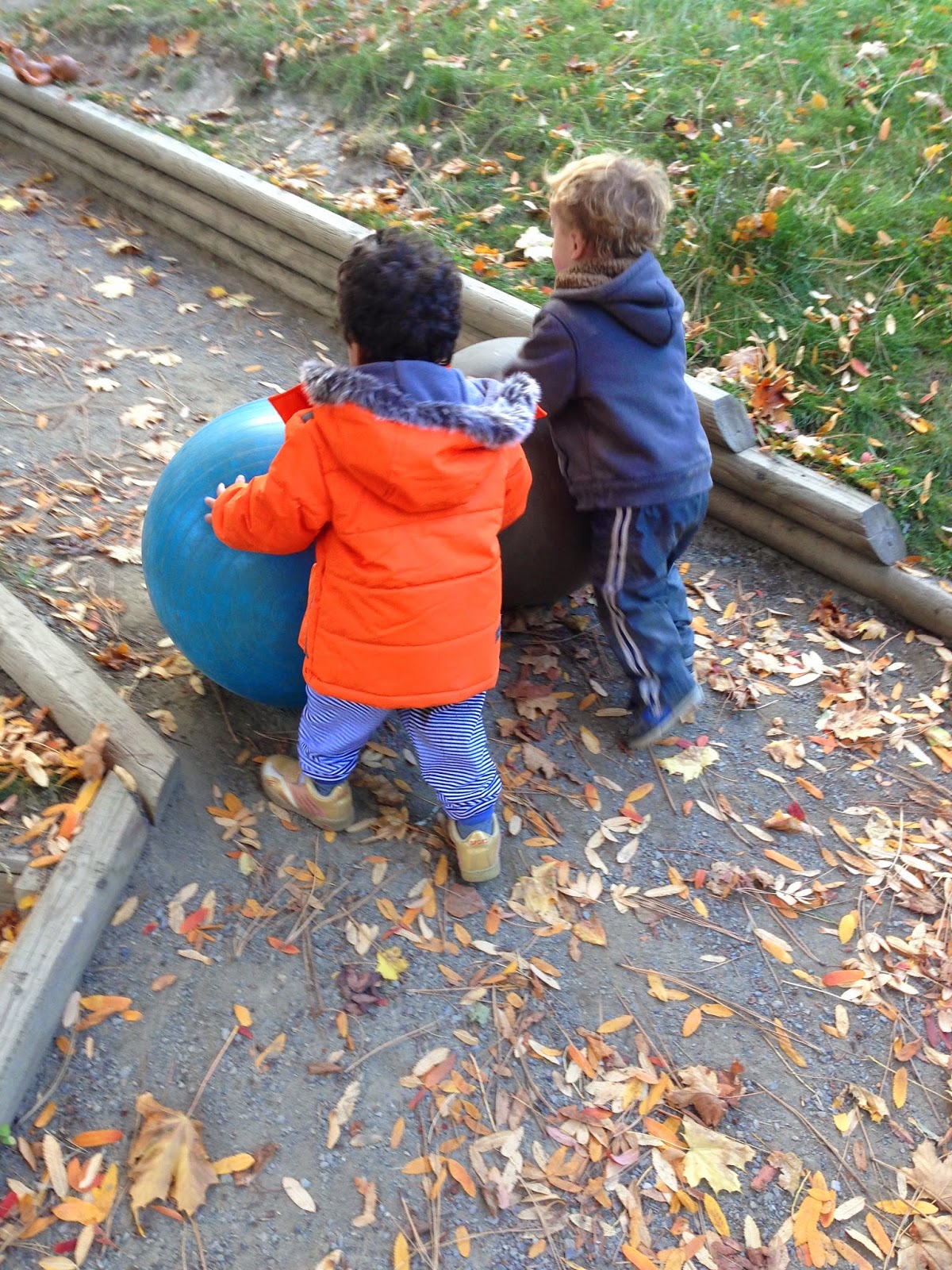We have a new game going on in our daycare yard these days. I call it, "Thrill of the Chase". Here is how it works. First you roll the large balls up the hill.
Right up to the very top. As you can see from this picture, there is a significant slope on this path.
Once the balls are at the top, you turn around and run down in front of them as fast as you can! EEEEEEEE!
And Repeat, Again and Again!
Up and down.
Lots of laughter ensues.
This little guy can fly.
I mean really fly. The faster the better is his choice. He was the one who started the game in the first place. He is embracing the challenge of using his large muscles.
Sometimes they fall, but mostly they are very competent and successful.
Only four children out of our twelve (that I know of) currently participate in this game.
Is this too much risk? Should we as caregivers stop the game because it's too risky? Here are some of the thoughts I have. Like I mentioned before, only a few children will play this game. The others observe but prefer to stay on the periphery. When I watch the ones that are playing I see choice and competence and confidence, so I trust them. I don't walk alongside saying, "Be careful", because they are careful. They are intuitively careful. I see them needing and loving pushing themselves to their limit. I see them learning to regulate their speed and coordination. I think that they need to go "too fast" in order to learn how much to slow down or what pace is just right for them. I see them cooperating with each other and I see them taking turns.
Practising and Mastering.
Just to be clear, the balls are are not pumped up hard, so they kind of roll down slowly and I rarely see the children bumped from behind with them. We keep the path clear of toys and other children while this game is going on. And actually I have noticed the other children keep themselves clear of this game for the most part. We position ourselves nearby to supervise but are using a
"hands-off, eyes on" policy with this game for now.
It is hard to allow children to take risks, isn't it? But there is so much value.
***********************************
“Keeping children safe is paramount to the work we do every minute when we
are with children. We must always stop or prevent situation that threaten
children’s well-being. But when we do intervene on behalf of children’s safety,
we can do it with the understanding that life has many challenges and risks,
and children deserve experiences and tools to learn to negotiate on their own.
The saying, “With few risks there are few rewards” is very true. Learning
involves risk. Relationships involve risk. Feeling competent and confident in
the world requires meeting a challenge and working to overcome it.”
~ Curtis, D., & Carter, M. (2003). Designs for living and learning:
Transforming early childhood environments. St. Paul, MN: Redleaf Press.










No comments